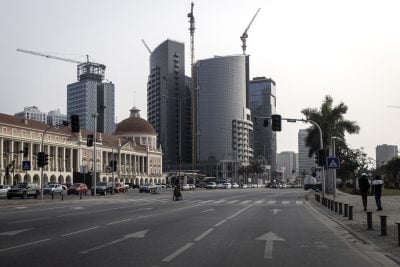The impact of severe El Niño-induced drought on crop production in southern Madagascar, where nearly 850 000 people are acutely food insecure, is likely to persist into 2017 and requires an intensified humanitarian response.
The lack of sufficient rains in the southern region of Androy alone resulted in an 80 percent decline in maize production this year compared with the already reduced levels of 2015.
Prolonged drought also seriously affected the production of another staple food, cassava, in both Androy and another southern region, Atsimo-Andrefana, where cassava production dropped by approximately half. People living in these areas have been hit by successive droughts over the last few years and their hunger situation is expected to remain severely stressed into 2017.
Meanwhile, parched conditions in the regions of Atsimo-Andrefana, Boeny, Melaky, Betsiboka and Ihorombe had a significant negative impact on rice production; with production declines of between 25 and 60 percent reported in these regions, according to a new FAO/World Food Programme (WFP) report released today based on data collected in July/August 2016.
1.4 million people food insecure
Recently updated figures show how the impact on agricultural production has undermined human food security. Some 1.4 million people are estimated to be food insecure in 2016/17 in Madagascar’s three southern regions of Androy, Anosy and Atsimo-Andrefana. Of these, around nearly 850 000 are acutely food insecure — meaning they are not able to meet their food needs and require urgent humanitarian assistance, according to the most recent Integrated Food Security Phase Classification (IPC) analysis for Madagascar.
Rising prices continue to weigh on the purchasing power of people in general and aggravate the food security of the most vulnerable. As a result, households are reducing consumption of locally produced crops and adopting survival strategies such as consuming seeds, selling their animals and agricultural tools and increasing their consumption of nutritionally inadequate wild foods, such as red cactus fruits. Overall, these conditions reflect a spike in the number of people experiencing acute food insecurity compared with the previous year.
Impact of drought on national crop production
The drought in Madagascar’s southern regions has reduced the country’s overall domestic production of maize and cassava. National maize production for 2016 is estimated at 316 000 tonnes, down 4 percent compared with the harvest in 2015 and 19 percent below the average. Cassava production, estimated at 2.6 million tonnes, decreased by 16 percent versus the recent five-year average.
National rice (paddy) production benefited from good rains in the centre, northern and western parts of the country – the main rice producing areas – and is estimated at about 3.8 million tonnes in 2016, some 2.5 percent above the previous year, but still some 5 percent below the five-year average.
FAO’s response
WFP and FAO are working together to target severely food insecure households with food and livelihood support, but are also ensuring that the most vulnerable households such as those headed by women and the elderly, or landless people, will not be disadvantaged. It is essential that livelihood support begins immediately in order to take full advantage of the forthcoming planting season in November.
FAO’s immediate agricultural response is targeting 850 000 people (170 000 small-scale farming households) in the worst-affected districts. The assistance combines provision of quick-maturing and drought-tolerant seeds and root crops (cassava and sweet potatoes).
Farmers will also receive tools to replace those that may have been sold during the current extended hunger season. Support to livestock production will also be provided through supplementary feeding of livestock and animal health related activities.
To date out of the $22 million needed for FAO’s relief interventions, only $3.8 million have been secured.
This funding is urgently needed to ensure farmers do not miss the coming planting season. Local agriculture must be restored to avoid long-term dependence on food assistance.
Distributed by APO on behalf of Food and Agriculture Organization (FAO).
Want to continue reading? Subscribe today.
You've read all your free articles for this month! Subscribe now to enjoy full access to our content.
Digital Monthly
£8.00 / month
Receive full unlimited access to our articles, opinions, podcasts and more.
Digital Yearly
£70.00 / year
Our best value offer - save £26 and gain access to all of our digital content for an entire year!

 Sign in with Google
Sign in with Google 





